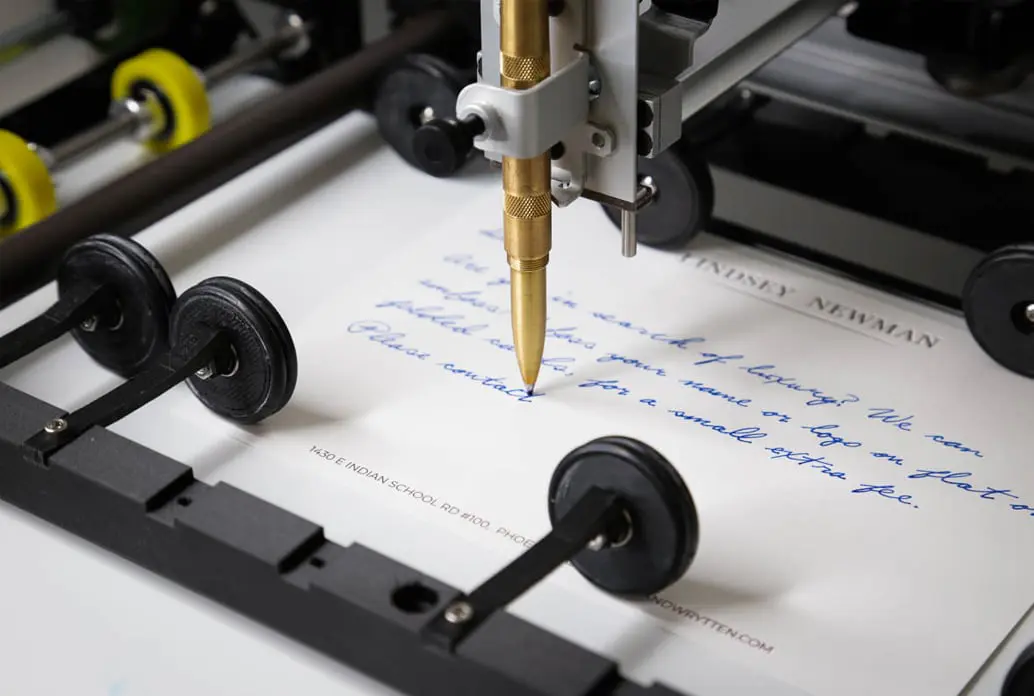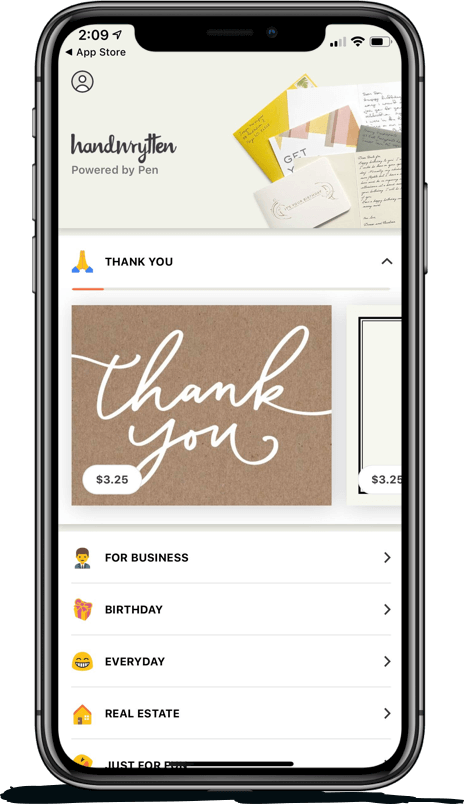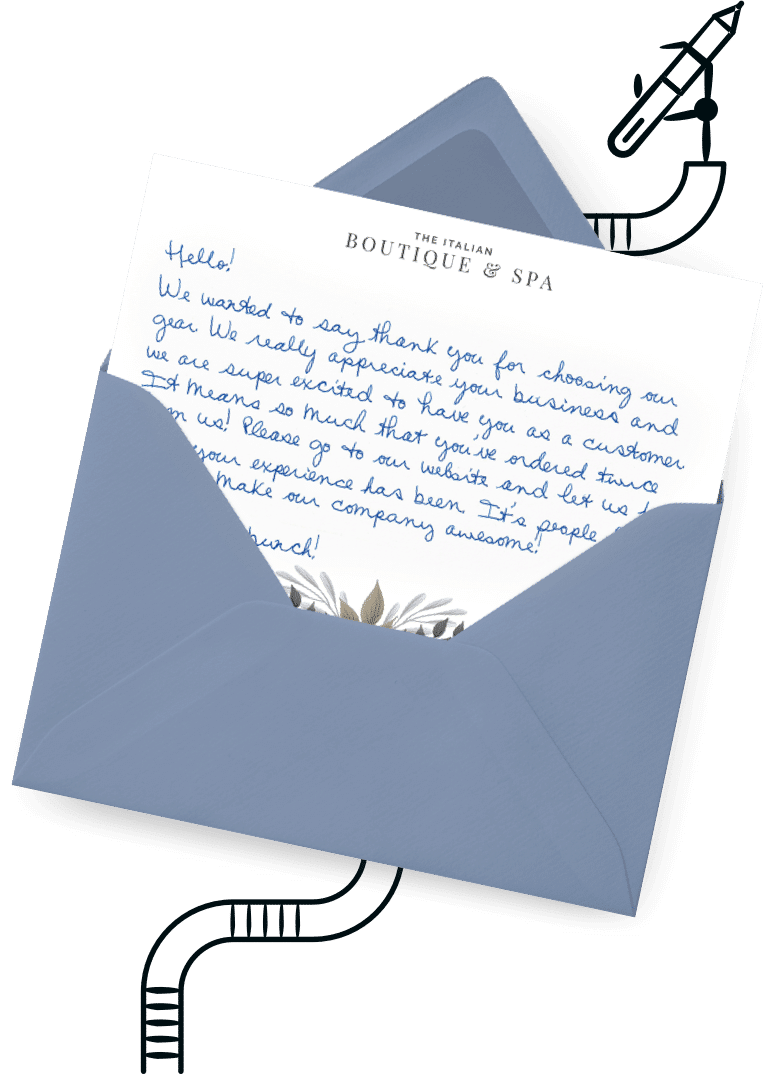
9280 S. Kyrene Rd.
Suite 134
Tempe, AZ 85284
Phone: +1 (888) 284-5197
Email: contact@handwrytten.com



You have been subscribed. Thank you!
For nonprofit organizations, donor recognition is the secret ingredient to building strong relationships with your supporters and ensuring their continued support.
In this blog post, we will explore the ultimate guide to donor recognition strategies and ideas, helping you create lasting donor relationships and maximize the impact of your fundraising efforts.
Get ready to dive in and discover the importance of understanding donor recognition, the three key components of an effective donor recognition strategy, and creative recognition ideas to develop donor relationships. Let’s start by understanding the concept of donor recognition and its significance in maintaining and strengthening relationships with your nonprofit’s supporters.
Donor recognition can help your nonprofit foster engagement, build relationships, and ensure that donors stay connected to your cause for the long term (one of the primary reasons why donor recognition is important).
But what even is it?
Donor recognition refers to the significant, sometimes underutilized act of acknowledging and expressing gratitude for the generous donations made by supporters to your nonprofit organization.
In most cases, established nonprofits have a recognition program that makes it easy to offer different types of donors different donation tiers of recognition. A recognition program could refer to many different things: an event, a physical or digital display of recognition, personalized communication, and more. It’s all about showing donors that their contributions are valued and appreciated.
All donors should be acknowledged for their kind contributions on some level, but you can create a tiered system to recognize those who have donated more frequently and generously, such as featuring them on a donor recognition wall.
We’ll get into some other donor recognition strategies further along in this article, but let’s first understand why recognizing your donors even matters.
Donor recognition plays a pivotal role in encouraging our donors to keep supporting us, making them feel included in our organization, and motivating them to advocate for us, which could result in more recurring donations. Recognizing donors promptly, within 48 hours of receiving their gift, is the best way to demonstrate your gratitude.
Prompt recognition of donors ensures that our appreciation is felt and our gratitude effectively communicated. Donors appreciate being appreciated. That’s why it’s important to recognize every donation they make – it lets them know their contribution has been seen and valued.
Having grasped the significance of donor recognition, it’s time we examine the three crucial elements of an effective donor recognition strategy: personalization, timeliness, and consistency.
Personalization is key to creating meaningful donor relationships. It involves customizing recognition efforts to the individual donor, taking into account their preferences and donation history.
Understanding a donor’s preferences and donation history allows us to devise recognition endeavors that are specifically catered to the individual donor. You can show your donors how much you value them by sending personalized thank-you cards, creating custom awards, and hosting special events just for them.
At Handwrytten, we make sending personalized handwritten cards a breeze. Our robots write your notes in realistic handwriting on high-quality cards and envelopes, making it easy for you to send a heartfelt thank-you message to each donor.
Promptness in acknowledging donations is vital as it makes donors feel valued and appreciated. It is crucial to recognize donations quickly – ideally within 48 hours – to ensure donors feel appreciated and valued.
Acknowledging donations within 48 hours of receiving the gift is the ideal way to thank donors. Sending printed mailings can give donors a tangible reminder of the organization and the mission they are devoted to, helping your messaging stand out from the digital noise.
At the same time, using some kind of automated software to immediately email or text your donors to thank them for their donation is a fantastic idea. While it doesn’t have the personal touch of a handwritten note, it does let them know that you care while simultaneously keeping your nonprofit at the front of their mind.
Consistency is an integral part of donor recognition. This cannot be overstated.
Maintaining frequent communication with donors and acknowledging their contributions at all touchpoints of interaction ensures consistency in donor recognition. Crafting a robust strategy to recognize donors consistently, taking into account factors such as the size of the donation and the level of their involvement, is essential to achieving both your nonprofit’s mission-related and donor-related objectives.
Consistency in donor recognition can help to achieve many things, including:
There are a few simple things you can do to consistently thank your donors.
Having examined the significance of donor recognition and the essential components of an efficient strategy, it’s time to delve into some innovative recognition ideas tailored for various types of donors, including:
Different donor recognition levels do matter – it wouldn’t make sense for you to send the same letter to both a new donor and a recurring donor, nor would it make sense for you to put all of your new donors on a donor recognition wall.
We delve deeper into this idea in another article if you’d like to learn more about the different types of non-profit donors.
Immediate acknowledgment letters, personalized emails, and inclusion in newsletters serve as excellent methods to express your gratitude to new donors. These personalized touches can make new donors feel valued and appreciated, increasing the likelihood of their continued support and involvement in the organization.
Many nonprofits also leverage the power of social media to name existing donors as well as thank new donors, creating a sense of community and public recognition for their generosity.
At the same time, many donors may not want to be publicly recognized. You can avoid invading their privacy by regularly posting about the different initiatives your nonprofit is driving so that they have an idea of where exactly their hard-earned dollars are going.
Repeat donors have committed to your organization long-term, and acknowledging their continual support is crucial. Non-monetary appreciation, such as exclusive events, phone calls, and volunteer opportunities, can be a great way to thank recurring donors for their loyalty.
You can spotlight your recurring donors on social media with an image and caption highlighting the impact of their support and expressing our gratitude – with their consent, of course! A social media shoutout is a great way to give them the public recognition they deserve while also spreading awareness of your mission.
Major donors have significantly invested financially in your organization, warranting special recognition beyond a shoutout on Facebook. Offering public recognition, donor gifts, personalized appreciation letters, and exclusive events can make major donors feel valued and connected to your cause.
Additionally, featuring major donors in annual reports, donor recognition walls or special segments of regular events can further acknowledge their generosity and impact on the organization.
Legacy donors, often through planned gifts or bequests, have committed financially to your organization for the long term. Providing long-term recognition through naming opportunities, plaques, and donor walls can ensure these donors feel valued and appreciated for their contributions. When you retain donors, you ultimately make your life as a nonprofit significantly easier.
Naming opportunities, such as dedicating a space or project in their honor, can create a lasting tribute to their generosity and commitment to your organization’s mission.
For one-time donors, small donors, or event attendees, recognition can come in the form of personalized thank-you notes, social media shoutouts, and acknowledgment in newsletters. While these contributions may not be as significant as those from recurring or major donors, they still play a crucial role in supporting your organization’s cause.
No matter the level of contribution, every donor should feel appreciated and valued for their support.
Armed with an enhanced understanding of the various types of donors and the essential elements of successful donor recognition strategies, let’s explore 12 inventive donor recognition ideas for a solid donor recognition program.
Donor spotlights are a fantastic way to recognize and thank your donors, showcasing their impact and story on your website, newsletters, or social media platforms. Publicly recognizing your donors not only highlights the donor’s generosity, but it simultaneously encourages other potential donors to join your cause.
By featuring donor spotlights, you can create a sense of community and foster a culture of giving within your organization.
Thank-you videos are a powerful way to express your gratitude and showcase the impact of your donors’ contributions. Some benefits of using thank-you videos include:
By utilizing thank-you videos, you can effectively express your gratitude and engage with your donors in a more impactful way. These videos can be shared on social media, emailed directly to the donor, or even played at special events as a heartfelt way to say thank you.
Organize exclusive events, such as a donor appreciation dinner or a reception, for major donors to thank them personally and show them the impact of their support.
Craft personalized handwritten notes thanking donors for their contributions. This personal touch can make donors feel valued and appreciated in a way that automated messages cannot.
Interactive donor walls offer an engaging and innovative way to recognize your donors, allowing them to explore the organization’s impact and their role in it.
Historically, most donor walls are physical displays in an office that have pictures of donors, along with a list of their contributions and events they have attended. However, modern technology makes this a lot more flexible now.
Perhaps you’d prefer to have a digital donor wall – one that appears on your website. It could be a simple, tabulated list of all of your donors and their contributions, or it could be as complex as a grid of headshots, hovering over an individual to reveal details about what they’ve done to support your nonprofit.
This interactive experience not only recognizes donors but also educates them about the organization’s mission and the difference their support has made.
Consider sending donor appreciation gifts, such as a t-shirt or mug with your organization’s logo, to recurring donors as a token of appreciation for their continued support.
While this is a slightly more generic nonprofit recognition idea, there are some ways you can spice it up. To do so, all you have to do is think about one question: what sets us apart from other nonprofit organizations?
Perhaps your nonprofit’s mission is to preserve birds in the Northwestern United States. Dial in on that – what aspects of the area, or your mission, are unique compared to other nonprofits? Maybe you can get in contact with a stuffed animal manufacturer to create custom-made hummingbirds for legacy or long-term donors.
This will be recognized as a much more intentional attempt to show appreciation for donors – rather than getting generic t-shirts that simply have your organization’s name on it, customizing the gift a little bit more can have a massive impact on your donor retention rate.
Offer exclusive volunteer opportunities, such as a meet and greet with beneficiaries or the chance to work on a project alongside staff, to show recurring donors the direct impact of their contributions.
This is one of our favorite donor recognition ideas – not only does it give them an opportunity to engage with your organization at a very personal level, but it simultaneously gives you another hand to directly help you with whatever you need. As a result, your relationship with volunteers will deepen, and who knows the benefits that’ll have?
Publicly recognize donors on social media platforms like Facebook, Twitter, and Instagram with an image and caption highlighting their support and impact on your organization’s mission.
Again, we want to reiterate – aim to make each shoutout unique. Don’t just push out a generic thank you for the sake of it – let the donor know that you truly do appreciate their help by recognizing what they did, and how it helped your nonprofit organization take steps toward your goals.
Organize donor appreciation events, such as a gala or auction, to not only thank donors but also create an opportunity for them to network with other supporters of your cause.
This is a great opportunity to hear a bit from your supporters what they would enjoy doing or seeing. You could send them a Google Form to fill out to survey them on what they might be interested in, offering them a short list of ideas for what an event could be.
This gift idea may not be the best for all nonprofits, but it’s still worth mentioning. You can create personalized certificates of recognition for each major donor, showcasing the impact of their contributions and expressing your organization’s gratitude.
On a case-by-case basis, this could be a recognition idea that you believe will resonate with specific donors – in those cases, this’ll be perfect to present to them on a donor-versary.
Offer naming opportunities for different spaces or projects in your organization as a way to permanently recognize and honor donors’ contributions. This could look like having their names inscribed into a plaque, their name being added to a donor wall, or sewing their name into a quilt.
Recognize legacy donors and board members’ long-term commitment by creating a special society or club that offers exclusive benefits, such as event invitations or behind-the-scenes tours, to its members.
These are just a few donor recognition and gift ideas that can be customized and tailored to fit your nonprofit’s unique needs and goals. Remember, the key to successful donor recognition is showing genuine appreciation and creating meaningful connections with donors, no matter how big or small their contributions may be. So get creative and find ways to make your supporters feel valued!
Having delved into numerous donor recognition ideas, you should have an idea of a basic donor recognition plan. These practices include tracking and measuring success, adapting to donor preferences, and maintaining a donor-centric approach.
By following these best practices, you can ensure that your donor recognition efforts are effective and have a lasting impact on your supporters and your organization’s mission.
Tracking and measuring your success using metrics such as:
is crucial to ensure the success of your donor recognition efforts. By evaluating the effectiveness of recognition efforts and making data-driven adjustments as needed, you can maximize your impact and optimize your strategies.
Remember, metrics matter – they provide valuable insights into the success of your donor recognition strategies and help you make informed decisions to improve your efforts.
To ensure that your recognition efforts resonate with donors, it is vital to understand and respect their unique needs and desires. By taking the time to get to know each donor and their individual preferences, you can customize your recognition efforts to match their interests and needs.
This could include sending personalized thank-you notes publicly recognizing donors or providing tailored communication that reflects the donor’s interests. When you adapt to donor preferences, you show that you value and appreciate their support, strengthening your relationship with them. This should be the goal of any strategy – to express gratitude and strengthen the relationship you have.
Donors deserve to feel appreciated, and should be, for donating to your cause.
Adopting a donor-centric approach implies placing the donor at the heart of all recognition efforts, emphasizing their impact, and nurturing a sense of belonging. By emphasizing personalized communication, actively listening, and expressing gratitude for donor support, you can build strong relationships and cultivate long-term support.
This approach can help create a positive image of your organization and encourage donors to continue supporting your cause.
Handwrytten is a personalized note and card service that can help your nonprofit create memorable, heartfelt messages to recognize donors. By using our platform, you can customize handwritten notes with your organization’s logo and tailor them to each individual donor.
Many of our current and previous nonprofit clients love our user-friendly interface and our integration with common management systems like Salesforce, HubSpot, Zapier, and more!
With Handwrytten, it is extremely simple to send automated handwritten notes to new donors, current donors, major donors – whoever it may be. All you need to do is wryte (type) a brief note into our platform, select a handwriting style for our robots to write, add in the correct names and addresses, and we’ll handle the rest!
In conclusion, donor recognition is an essential component of building and maintaining strong relationships with your supporters. By understanding donor recognition, implementing the three key components of an effective strategy, and exploring creative recognition ideas tailored to different types of donors, you can create lasting connections and maximize the impact of your fundraising efforts. Don’t forget the importance of tracking and measuring success, adapting to donor preferences, and maintaining a donor-centric approach to ensure the effectiveness of your donor recognition strategies.
Remember, your donors are the lifeblood of your organization, and their continued support is crucial to achieving your mission. So, go ahead and show them just how much you appreciate their generosity and commitment. Happy recognizing!
Donor recognition is the practice of thanking supporters for their donations, showing appreciation in tangible ways, and offering various levels of public or private acknowledgment depending on the amount of gift given. This encourages donors to continue giving, enabling a cycle of ongoing support.
Thanking your donors is an essential step in recognizing them; show your appreciation by sending prompt thank-you letters or emails, calling them, creating videos, writing personalized letters, mentioning them on social media, sending gifts, and designing memorable experiences.
For best practice, acknowledge donors within 48 hours of their gift with personalized messages. Additionally, thank donors at each touchpoint to show your appreciation for their contributions.
Donor recognition and naming is an expression of gratitude to celebrate a donor’s gift, providing them with public distinction and legacy.
Tailor your donor recognition efforts to different types of donors by offering acknowledgment letters, personalized emails, exclusive events, and naming opportunities for new donors, recurring donors, major donors, and legacy donors.


Scale your handwritten outreach, creating positive impressions and long lasting bond.
Sign Up Today!


Over 100 designs to choose from or design your own. Our online card customizer makes it simple.
Check Out Our Cards!





